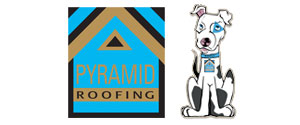- Do you subscribe to Dharma Dog Training’s Newsletter? You should.
- A Unique Campaign from The Humane Society of the United States
- Rabid bats in Omaha- Stay safe, prepared with these tips
- Springtime Activities in Omaha
- Mill Dog Monthly from Bailing Out Benji
- World Spay Day, Legislative Alert in Nebraska
- Attend the Nebraska Rescue Council’s monthly meeting this Saturday
- Five Hard-to-Ignore Reasons to Adopt!
- Paws in Pink to Benefit Breast Cancer Foundation
- VCA, Inc. Acquires MidWest Vet Specialists from Kansas State University
The physical examination- what is your vet doing?

Dr. Christopher Byers, a veterinarian with Omaha’s Critical Care DVM, writes extensively in the Critical Care blog and has kindly given Pets in Omaha a chance to share his work here. This week, we’ll be sharing a post per day that will be helpful and informative to every pet owner, so check back daily for great content from Dr. Byers.
If you know Dr. Byers, you understand his belief that the two most important diagnostic tests veterinarians perform do not involve collecting blood or urine samples. They’re basic. They’re the first tests veterinarians learn in veterinary school. What are they? These quintessential tests are obtaining a thorough patient history and performing a complete physical examination. In this post, Dr. Byers spends some time explaining what veterinarians are actually doing when they perform complete physical examination on your fur babies.
The Physical Examination – The Head & Neck
The heads and necks of dogs and cats understandably have many important structures. The obvious organs are the eyes, ears, nose, and the mouth. Lesser appreciated structures include lymph nodes, salivary glands, and thyroid gland.
Eyes: Veterinarians palpate/touch and visually inspect the structures around the eye (called adnexa) to identify any discomfort and/or asymmetry. They will look in the eyes directly, as well as with the help of some non-invasive instrumentation that allows a more comprehensive evaluation of the eyes.
A veterinarian is using a special instrument called an ophthalmoscope to look at structures in a dog’s eyes
Ears: Veterinarians will touch, smell, and visually inspect a patient’s ears, looking for evidence of infection, inflammation, and/or tumors. Both the ear flaps (called pinnae) and the ear canal (called the external ear canal) should be fully evaluated. Thus veterinarians will often use a specially designed instrument called an otoscope to look deeply inside the external ear canal and inspect the ear drum (called the tympanum).
A veterinarian looks inside a dog’s ear with an instrument called an otoscope
Nose: Dogs and cats generally breathe in through their noses, and any disease that impedes this ability can cause breathing problems. Veterinarians will touch the nostrils and muzzle/snout to assess for discomfort and asymmetry. They will listen for abnormal noise made by the pet during inhalation (called stertor), and they will carefully assess the patency of each nostril.
Mouth: There are many structures to evaluate inside the mouth – teeth, gums (called mucous membranes), tongue, tonsils, and lips. Many of these structures are readily visible when the pet is awake. However complete evaluation the back of the throat requires sedation, and is only performed with parental consent if a veterinarian has concerns for a problem in that region.
A veterinarian evaluates the mouth of cat during a complete physical examination
Other Organs of the Head and Neck: The head and neck contain some important lymph nodes and salivary glands that should always be palpated to assess them for asymmetry and discomfort. In the throat region is the thyroid gland that is not typically palpable; veterinarians will examine this area thoroughly to look and feel for masses that could represent thyroid tumors.
A veterinarian palpates some lymph nodes in a canine patient
Physical Examination – The Chest
The chest (aka: thorax) is a cavity that contains many important structures, most notably the heart and lungs. Veterinarians commonly and initially evaluate the rib cage with simple palpation. Then they will use a stethoscope to listen carefully to both your pet’s heart and lungs. Thorough evaluation of these organs with a stethoscope (called auscultation) must be done in a quiet room to allow the doctor to hear any soft and subtle abnormal sounds.
Please don’t talk to veterinarians while they are auscultating your fur baby.
They may not hear some important heart and/or lung sounds, and they will almost certainly miss the important information you want to share with them. Wait until they remove the stethoscope from their ears, and then resume your conversation.
A veterinarian listens to a patient’s heart and lungs with a stethoscope
Physical Examination – The Abdomen and Urogenital Tract
Just as the chest cavity has important organs, so too does the abdominal (aka: peritoneal) cavity – liver, kidneys, stomach & intestines, pancreas, and urinary bladder – just to name a few. Veterinarians are trained to gently palpate the abdominal cavity to detect discomfort, organ enlargement, and/or abnormal fluid accumulation. Veterinarians also use their stethoscopes to listen for noises made by the movement of the intestinal tract. A complete examination of the gastrointestinal tract requires a rectal examination. This a relatively easy to perform in dogs. Rectal examinations are not routinely performed in cats without sedation. The external sex organs of dogs and cats (e.g. penis/prepuce and testicles for males;mammary/breast glands and vulva for females) should always be appropriately evaluated.
Physical Examination – Bones & Muscles
Evaluating how a patient moves is an essential part of a complete physical examination. Obvious limping makes identification of a problem relatively easy. Veterinarians may need to sedate some patients to thoroughly evaluate the musculoskeletal system because of intense discomfort. Yet companion animals often do a stellar job of hiding issues from humans. Indeed joint, bone, and/or muscle conditions can be subtle, requiring veterinarians to perform methodical and logical evaluations.
Physical Examination – The Skin
The largest organ of the body is the skin. It has so many unique functions and can have numerous possible problems. Remember our previous discussion about skin masses and how important it is to have them evaluated by your family veterinarian if they are larger than a pea and/or have been present for more than one month. Veterinarians will thoroughly examine your pet’s fur and skin, looking for evidence of bacterial and/or yeast infection, as well as parasites, inflammation, and/or possible cancer.
The take-away message about a physical examination…
I simply can’t underscore enough the importance of veterinarians performing complete physical examinations on their patients. The information gleaned truly helps pave the way for efficiently identifying and successfully treating a pet’s health problem. This is a concept I stress repeatedly to my students, interns, and residents. If this information is important enough for me to teach these folks, so too should I be teaching it to pet parents. I want companion animal owners to have familiarity with the physical examination process so they can always be an integral part of their furry companion’s healthcare team.
To find a board-certified veterinary internal medicine specialist, please visit the American College of Veterinary Internal Medicine.
To find a board-certified veterinary emergency and critical care specialist, please visit the American College of Veterinary Emergency and Critical Care.
Thanks to Dr. Byers for giving some insight into what’s happening when vets place your pet upon their table for routine checks. To find more from Dr. Byers and other veterinarians, click here.
Related Posts
Latest News
-
How Rescue Pets are Good for Your Health
Marie Miguel of BetterHelp.com as submitted this useful post we...
- Posted 8 hours ago
- 0
-
3 Tips for Pet Owners on Training Rescue Dogs
Owning a rescue dog can take some work compared to...
- Posted 4 weeks ago
- 0
-
10 Tips To Remember When Bringing Your Rescue Dog Home
Bringing your new rescue dog home for the first time...
- Posted 4 weeks ago
- 0
-
Choosing the Right Pet for Your Lifestyle
Are you thinking about getting a pet but unsure what...
- Posted 1 month ago
- 0
-
How to Make Your Rescue Pet as Comfortable as Possible
Did you bring home a new pet from a shelter...
- Posted 2 months ago
- 0
-
How Having A Pet Can Change Your Life
Having a pet can open your heart in ways that...
- Posted 7 months ago
- 0
-
How To Improve The Life Of Your Senior Pet
Do you have an elderly fur baby and want to...
- Posted 8 months ago
- 0























You must be logged in to post a comment Login